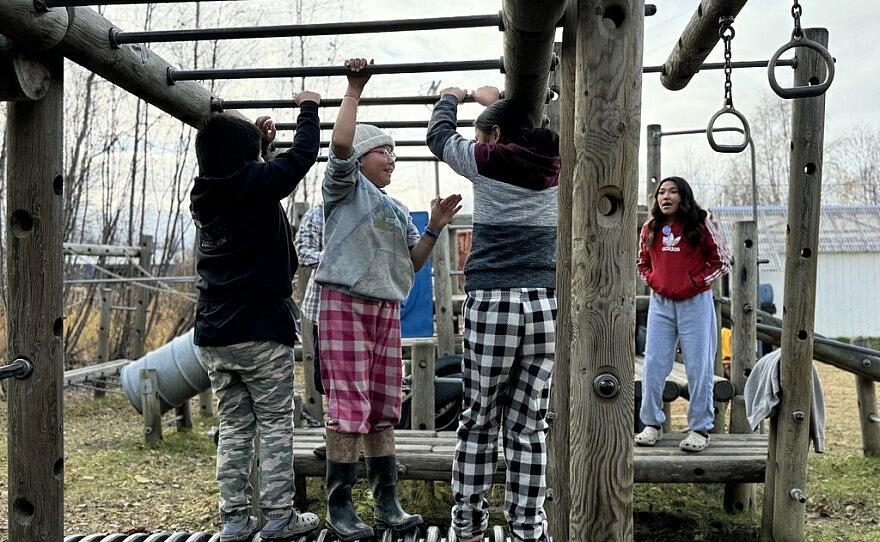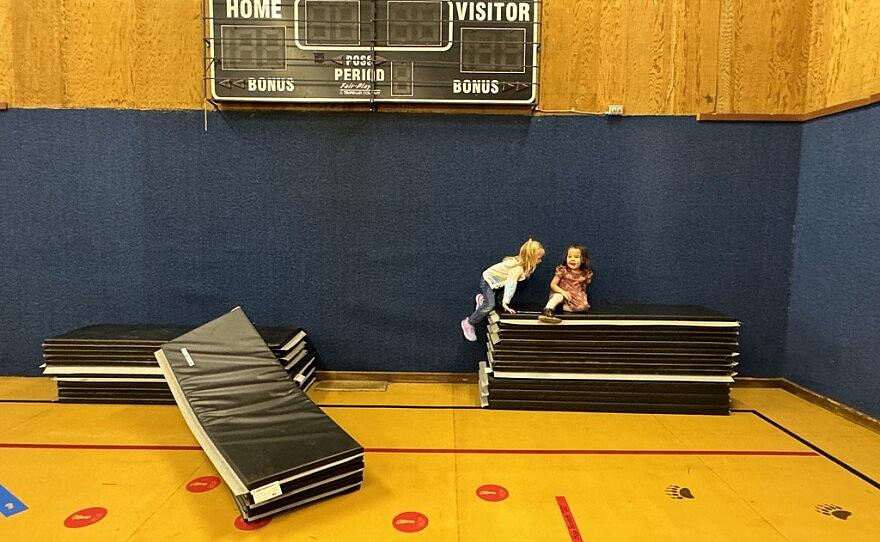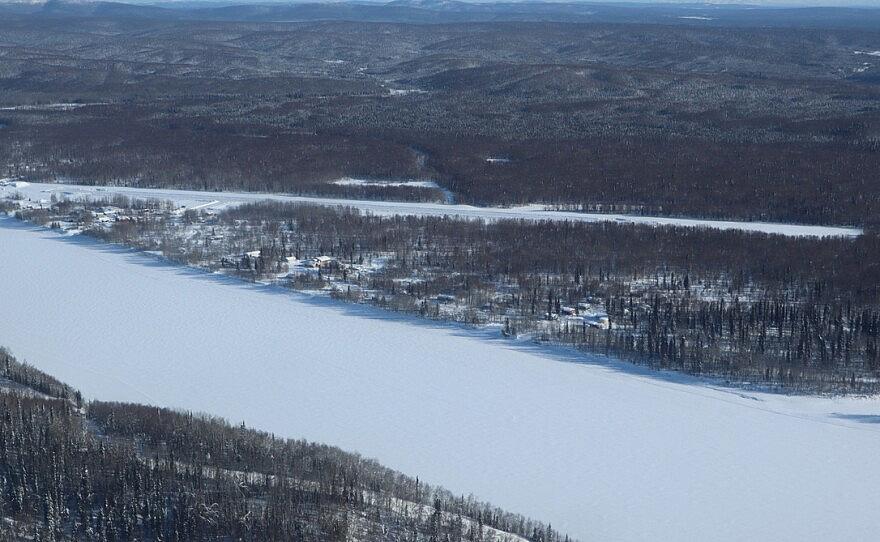Alaska’s rural schools need millions to address infrastructure, but have only seen a fraction
The story was originally published in KYUK with support from our 2024 National Fellowship.

The Jack Egnaty Sr. School in Sleetmute.
Emily Schwing / KYUK
AUDIO TRANSCRIPT:
EMILY SCHWING: Most school districts in Alaska have access to money that doesn't come from the state, but rural school districts are different.
MADELINE AGUILLARD: We do not have any local contributions. We do not have a tax base. Most of our family members, our community members, they live a subsistence lifestyle.
EMILY SCHWING: Madeline Aguillard is the superintendent of the Kuspuk School District, which includes Sleetmute and eight other schools scattered across 12,000 square miles, roughly the size of Maryland. Without a tax base, Aguillard says her district is almost entirely reliant on state funding to help pay for everything from textbooks to sewer lines.
MADELINE AGUILLARD: The state does have an obligation to provide a public education. You know, in the constitution for the state of Alaska, to the students in our region. And I would think and I would hope that providing that education would also mean assistance with providing the physical space.
EMILY SCHWING: Since 1998, rural school districts statewide have made nearly 1,800 funding requests to the state to replace sewer lines, heating systems, roofs, and a host of other projects. Only about 14% of them actually received money.
According to an analysis of data from the state’s education department, at least 135 rural school projects have waited for state funding for five years or more. Thirty-three of those projects have languished on the state’s funding list for more than a decade.
Each year, urban and rural school districts submit hundreds of requests for money to the state to help pay for their maintenance and construction needs. The education department ranks the applications and gives that list to lawmakers to help them make decisions about how to fund the state budget.

Students play on the monkey bars outside Sleetmute's school.
Emily Schwing / KYUK

Rare play time in Sleetmute's school gym. It's been deemed unsafe, and is usually closed.
Emily Schwing / KYUK

Sleetmute, on the Kuskokwim River, as seen from the air.
Emily Schwing / KYUK
Because it’s a competitive process, school districts have to prove their project is worth funding. Since 2021, Madeline Aguillard says her district has spent more than $200,000 on engineering and architectural inspections to beef up Sleetmute’s application.
MADELINE AGUILLARD: We've jumped through the hoops. We filled out the applications. We've gotten those in.
EMILY SCHWING: Sleetmute is one of 128 rural public schools operating in Alaska today. The state owns just under half of those buildings.
After years of rejection, some school district administrators have turned to lobbyists to help drum up support during the annual legislative session.
This means Madeline Aguillard’s school district is paying tens of thousands of dollars each year to convince lawmakers to invest in a building the state owns.
MADELINE AGUILLARD: I identified we have a major problem, not only the life and safety concerns that, you know, these professional engineers, these architects are telling us they're putting in writing, they're signing their name to it. But I had to do something. I knew our story needed to be told, and our story needed to be told as loud as possible.
EMILY SCHWING: And it’s not just a problem in Aguillard’s district. In Venetie, a village 30 miles north of the Arctic Circle, exposed electrical wiring hangs close to flammable insulation. Thorne Bay, on an island in Southeast Alaska, has requested money to replace its fire sprinklers 17 times without success. And in the Bering Sea coastal village of Newtok, the school’s pipes froze and broke. So for most of the last school year, kids rode a four-wheeler, known as “the bathroom bus,” home twice a day to relieve themselves.
BRYCE EDGMON: I think the evidence speaks for itself.
EMILY SCHWING: Alaska House Speaker Bryce Edgmon was in Sleetmute in October, where he toured the school, met with teachers, and talked with students.
BRYCE EDGMON: These bright young children show up every morning to go to school in a building that’s not fit for even anything but being ready to be demolished.
EMILY SCHWING: An analysis of data from Alaska’s education department shows that in at least 20 cases since 1998, funding requests were on the state's ranked list of projects for so long that cheaper repairs evolved into proposals to tear down and replace schools. In total, those projects cost the state tens of millions of dollars more than what it would have cost to fund the original repairs.
The Department of Education’s own regulations say the state is responsible for any major maintenance and construction for buildings it owns. But Alaska Education Commissioner Deena Bishop says it’s not that simple.
DEENA BISHOP: That means we're responsible according to the amount of funds that we can invest in that, so that the funding for those projects comes from the state of Alaska. It's the legislature that would provide funding for those positions. And then our job is to support those districts in executing them.
EMILY SCHWING: Bishop acknowledged small, rural school districts are struggling, but she says her department can only work with what the legislature allocates to education each year.
DEENA BISHOP: Our state has many needs, and there's lots of different stakeholders from around the state that do a great job of sharing their need. And then it's our legislators who have to, like, balance Alaska and, and what is it that we need? Is it roads? Is that clean water facilities? Is it sewer? And we also play a part in that. But it, but it's, you know, our needs are met along the lines of the entire state.
EMILY SCHWING: This year, requests for investments in school infrastructure statewide come close to $800 million. Rural schools district requests account for more than half of that. That kind of money just isn't available, according to Bryce Edgmon.
BRYCE EDGMON: No, we don’t have the financial means, unfortunately, to put a sort of Marshall Plan, if you will, towards modernizing all these remote, smaller schools that are in far flung areas of Alaska.
EMILY SCHWING: Last June, Sleetmute finally got some good news. The governor signed off on the largest one-time increase to education funding in Alaska in nearly a decade. It included money to fix Sleetmute’s leaking roof. But, left unchecked for two decades, the building requires more than a roof repair. The foundation is crumbling; there’s water damage in the ceilings and black mold throughout the interior. Madeline Aguillard says the money isn’t enough to fix everything.
MADELINE AGUILLARD: This is what happens when it's too little too late.
EMILY SCHWING: Angela Hayden has been a teacher in Sleetmute for 17 years. The school’s roof has been leaking the entire time.
ANGELA HAYDEN: It’s annoying to have to worry about. So, like, when I come in the building, especially after, like, a lot of rain or a lot of snow, I just think, 'Okay, what am I going to find when I get in the building? What am I gonna have to deal with before I can deal with my classroom?'
EMILY SCHWING: When she does come into her classroom to teach kids every day, it’s business as usual.
ANGELA HAYDEN: This is a big deal to the state. But as far as our day to day operations, like, we're we're going to keep going. We're not going to let it devastate us.
EMILY SCHWING: In Sleetmute, I’m Emily Schwing.


